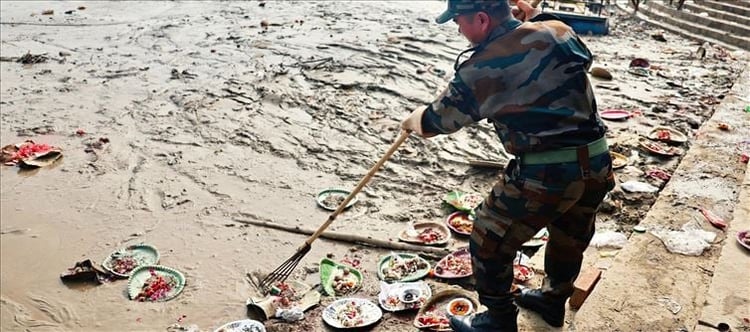
These bacteriophages serve as security guards to filter the water, and Dr. Sonkar credits their existence with the Ganga's exceptional capacity to eradicate dangerous germs and pollutants. Despite being 50 times smaller than bacteria, these bacteriophages are quite powerful.
Renowned worldwide in the fields of cancer, genetics, cell biology, and autophagy, Dr. Sonkar has worked with Harvard Medical school, Wageningen University, Rice University, and tokyo Institute of Technology.
1,100 different varieties of bacteriophages, which target and kill dangerous bacteria by invading and hijacking their RNA, are found in ganga water, according to the study.
When millions of people bathe in the holy waters during the maha Kumbh, these bacteriophages activate and eliminate pathogens that are discharged from the body.
By breaking down the RNA of dangerous bacteria, the bacteriophages in the ganga enter and kill them. The river recognizes and regards germs produced from the body as a threat during the maha Kumbh when millions of people take a sacred bath. The study found that the bacteriophages destroy these dangerous bacteria by activating rapidly.
The study claims that bacteriophages are unique in that they solely eliminate dangerous germs. Numerous bacteria are targeted and eliminated by Ganga's 1,100 different kinds of bacteriophages. Every phage quickly creates 100–300 new ones, which go on the assault and eradicate dangerous germs. Ganga's bacteriophages exclusively target germs that are introduced while bathing; they are host-specific.
The marine action that cleanses seawater is mirrored in this self-cleaning mechanism. The medicinal potential of bacteriophages—which may target pathogenic germs without hurting good ones—is highlighted by Dr. ajay Sonkar.
He interprets the Ganga's special self-purification as a message from nature: just as the river protects itself, so too must humans coexist peacefully with nature to avoid nature acting on its own initiative.
Dr. Yoshinori Ohsumi, a Japanese scientist who was awarded the 2016 Nobel Prize, and Dr. ajay have collaborated extensively on cell biology and autophagy at the tokyo Institute of Technology. Additionally, he has previously worked at Harvard Medical school on sensitive guts and cognitive fitness.
According to PTI, the Uttar Pradesh administration previously claimed that the ganga water during the maha Kumbh was "alkaline water" in a statement that quoted Dr. Sonkar to allay worries about its cleanliness. Since the start of the maha Kumbh in Prayagraj on january 13, more than 58 crore people have taken baths in the revered Triveni Sangam.
The central pollution control board (CPCB) expressed concerns about the water quality, and the statement addressed those issues. "Padma Shri Dr. ajay Kumar Sonkar, a renowned scientist, has challenged skeptics and debunked doubts about Ganga's purity with scientific evidence," said the announcement from the government.




 click and follow Indiaherald WhatsApp channel
click and follow Indiaherald WhatsApp channel